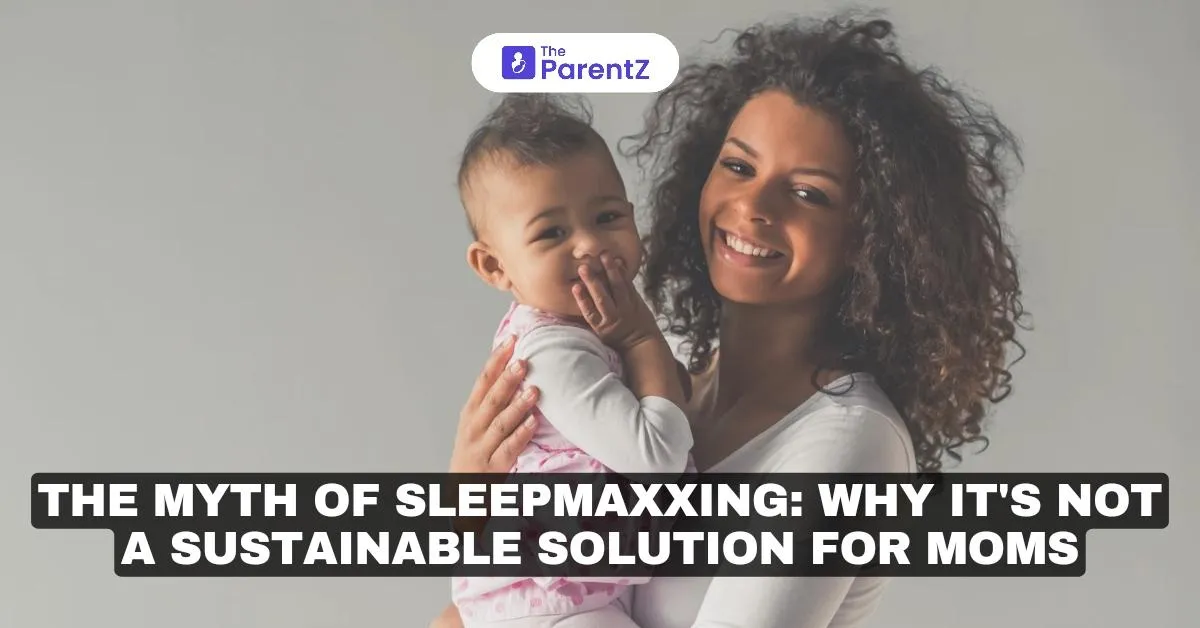Indeed, sleepmaxxing is nothing less than a dream. It’s like sleeping eight hours a night, waking up refreshed, and doing some extra stretches before starting your day. Nowadays, this fantasy has taken up all over social media with a promise to keep feeling your best, and the key to it is getting a perfect sleep. While everyone wants it, for moms, sleepmaxxing might not be all they need. In fact, in this modern world it could be equivalent to ‘having it all.’
Read below this article where we will debunk the myths of sleepmaxxing and why it is not a sustainable solution for moms.
The Reality of Sleep for Moms
Did you know, according to the National Sleep Foundation, 60 percent of moms with young children sleep less than six hours a night? Surprisingly, that's half of what most adults need to work at their best. Despite this fact, some sleep-maximizing influencers claim that with a few changes, it's easy to find a way to get the perfect sleep during the day. Amidst the late-night feedings, laundry piles, and homework help, besides struggling with maintaining a work-life balance, sleep has become a distant thought, especially for mothers.
The Real Problem With Sleepmaxxing
Sleepmaxxing is a popular concept where people—especially on social media—try to modify their sleep like a science project. In this trend, blackout curtains, white noise machines, meditation apps, and sleep supplements are some of the essential elements to creating that perfect sleep environment. And the influencers promise that if you just follow a perfect sleep routine, you will wake up energized and ready to take on all the responsibilities energetically.
For mothers, the truth is—even if they try, they often end up with a screaming toddler, a teething baby, or an early-morning ‘I’m hungry!’ from your little one before even they enjoy a few moments of waking up.
According to the Centers for Disease Control and Prevention (CDC), 1 in 3 adults don’t get enough sleep, but for parents, the figures are even worse. In fact, another study stated that 45 percent of mothers experience sleep disturbances due to their children’s sleep habits.
In short, even though sleepmaxxing has several benefits to offer, it does not consider the realities of mom life. The hard truth is—sleepmaxxing isn’t sustainable for everyone, especially when you have young kids.
What’s the Actual Solution for Moms?
The best approach is to, instead of focusing on getting perfect sleep, one should actually consider what works best for them. So even if you can't get eight hours of sleep, try to count the sleep you actually get, even if that means 5-6 hours. And what’s better than afternoon naps after your baby sleeps? The trick is to take advantage of those small windows of downtime to take some Z’s yourself too!
Another important aspect is that sometimes it's not merely about your own sleeping routine but your child’s too. Therefore, an effective way is to help your little one create a consistent bedtime routine to help you get a little more sleep.
While mom life comes with endless mental load, what you might need is mindfulness and relaxing activities to keep you energized and stress-free throughout the day.
Takeaway
While sleepmaxxing may claim getting eight hours of sleep can do wonders when it comes to your lifestyle, in reality, this is not practical for everyone, especially for moms. After all, perfect sleep is hard to come by when you’re constantly balancing the needs of others. Therefore, it's important to stop chasing unattainable sleep goals and rather focus on seeking balance and adhering to what really works great for you.








Be the first one to comment on this story.